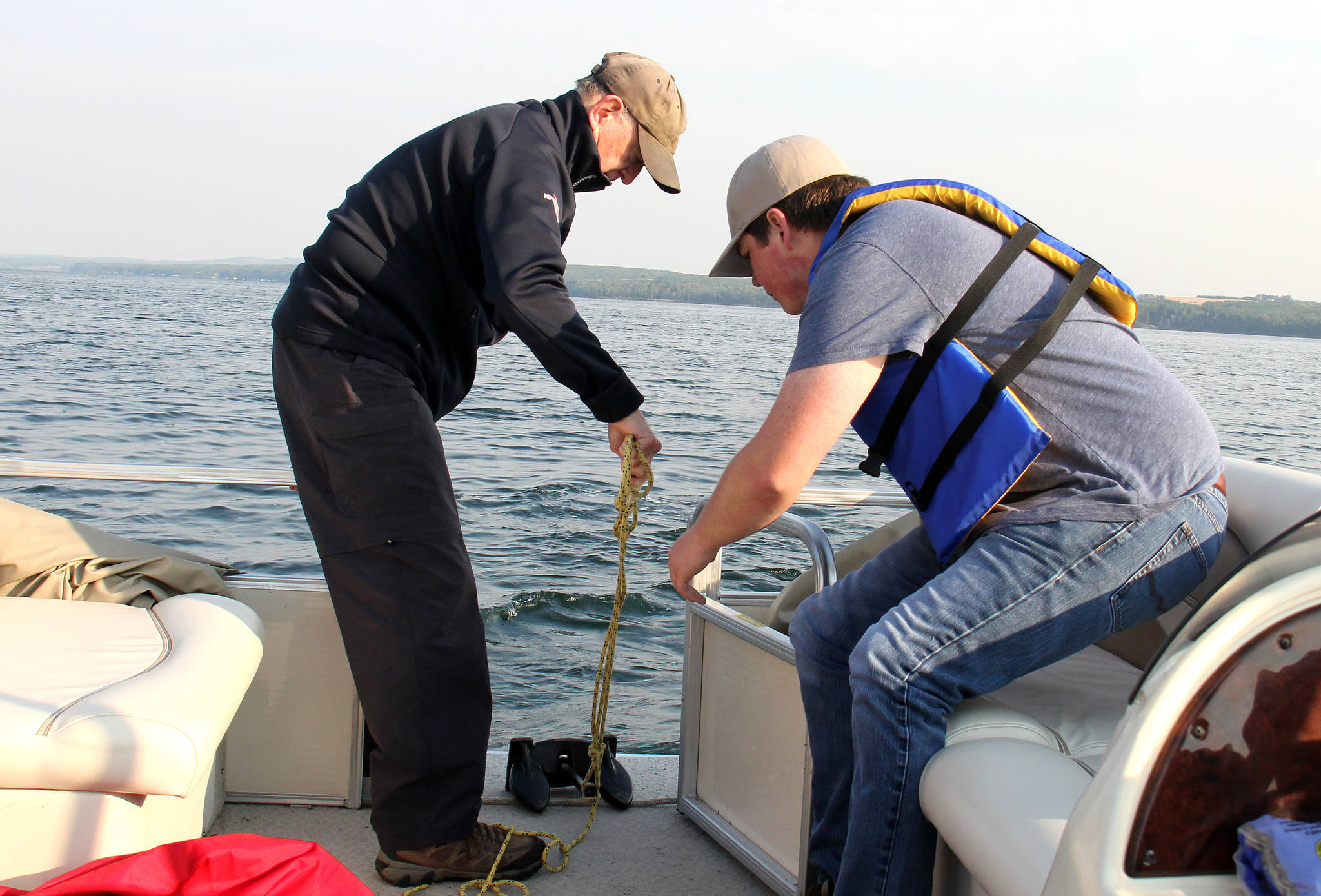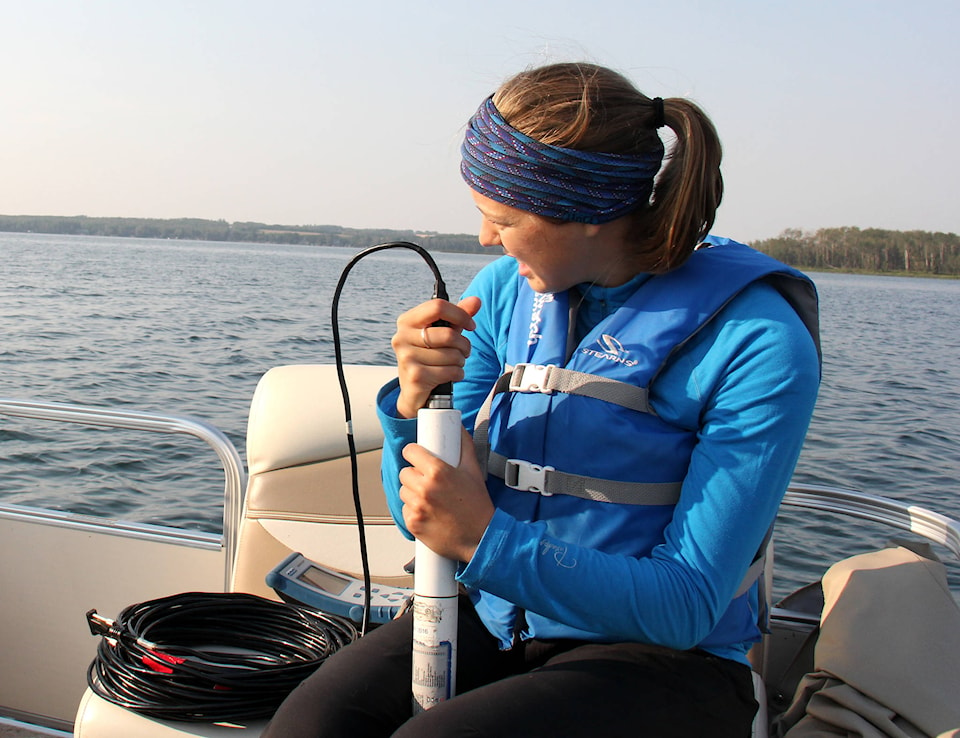The overall health of the lake is an important part of life in Sylvan Lake. It affects everything from agriculture to tourism in and around Sylvan Lake.
Which is why the Sylvan Lake Watershed Stewardship Society makes it a point to monitor the well being of the lake with the help of the Alberta Lake Management Society (ALMS).
Four to five times each summer season a LakeWatch technician from ALMS comes out to Sylvan Lake to do a variety of tests and check to monitor how the lake is doing.
Lindsay Boucher, LakeWatch technician with ALMS, last came to Sylvan Lake for water sampling on Aug 14.
“We look at a bunch of different factors that could affect the lake. It could be nitrates and sulphates in the water, the presence of zebra mussels and even the levels of different plankton in the water,” Boucher explained.
To get a clear image of how the lake is doing, Boucher goes to 10 different sites around the lake, which helps to develop a clear average for the lake.
At the deepest part of the lake, which is around 58 feet, or just under 18 metres, Boucher and a few local volunteers take further samples of the water, including temperature, visibility, oxygen levels and levels of contaminates like sodium, chloride and total phosphorus.
The ride around the lake collecting samples showed the lake’s health is fairly consistent all around.
“The lake has been very consistent, from temperature to levels of total phosphorus, which is a very good thing,” said Boucher.
Boucher’s testing did show a slight increase in chloride concentration in the lake, which is likely a contaminate from runoff with winter road salt in it.
Total phosphorus is an important nutrient indicator, with Boucher’s recent data, it can be seen it has not changed a lot over the last 33 years or so.
The amount of total phosphorus is “below the threshold concentration at which chronic cyanobacterial blooms (also known as blue-green algae) might occur in Sylvan Lake.”
“Sylvan Lake is one of the few lakes that isn’t in a huge danger of blue-green algae,” said Boucher. “It is something that [ALMS] and Alberta Health observe and monitor.”
While the lake is generally in good standing, Boucher says many different things can effect the condition of the lake. This can include agricultural runoff, contaminants from boating to foreign aquatic life.
Graeme Strathdee, president of the Sylvan Lake Watershed Stewardship Society, says a lot of people don’t realize who is monitoring the well-being of the lake.
“I think sometimes they think it is a magic fairy who just collects the data for everyone,” Strathdee said.
The stewardship society isn’t loudly advocating for the lake, Strathdee says they don’t need to.
“The people around here are pretty good about caring about the lake, and the lake has been more or less the same for years,” he said.
The stewardship society has two more dates planned for water sampling on Sylvan Lake. The group along with ALMS will be out on Aug. 28 and again on Sept. 11.

